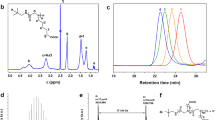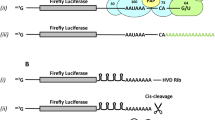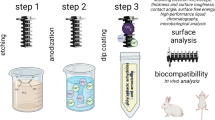Abstract
The aim of this work was to make new tools available for investigating the interactions between enzymes and substrate-like inhibitors in copper amine oxidases (CAOs), a class of enzymes that controls important cellular processes, such as the crosslinking of elastin and collagen, cell proliferation and the regulation of intracellular polyamines. Starting from previous work, we synthesized the poly(N,N-dimethylacrylamide)-based resin R2 and the new TentaGel resins T3 and T4 obtained by ether bonding CAO substrate-like inhibitor moieties onto commercial TentaGel S-Br, which contains bromomethyl groups susceptible to nucleophilic substitution reactions. We used polyacrylamide gel electrophoresis (PAGE) experiments to determine the capability of the prepared resins to capture plasma amine oxidase (PAO) and diamine oxidase (DAO), members of the CAO family. The poly(N,N-dimethylacrylamide)-based resin R2 was able to block PAO and DAO, being the first insoluble polymeric material capable of capturing enzymes of the CAO family.
Similar content being viewed by others
Log in or create a free account to read this content
Gain free access to this article, as well as selected content from this journal and more on nature.com
or
References
Mure, M., Mills, S. A. & Klinman, J. P. Catalytic mechanism of the topa quinone containing copper amine oxidases. Biochemistry 41, 9269–9278 (2002).
Buffoni, F. & Ignesti, G. Biochemical aspects and functional role of the copper-containing amine oxidases. Inflammopharmacology 11, 203–209 (2003).
Pietrangeli, P., Nocera, S., Mondovì, B. & Morpurgo, L. Is the catalytic mechanism of bacteria, plant, and mammal copper-TPQ amine oxidases identical? Biochim. Biophys. Acta. 1647, 152–156 (2003).
Lucero, H. A. & Kagan, H. M. Lysyl oxidase: an oxidative enzyme and effector of cell function. Cell. Mol. Life Sci. 63, 2304–2316 (2006).
Parsons, M. R., Convery, M. A., Wilmot, C. M., Yadav, K. D. S., Blakeley, V., Corner, A. S., Phillips, S. E. V., McPherson, M. J. & Knowles, P. F. Crystal structure of a quinoenzyme: copper amine oxidase of Escherichia coli at 2 Å resolution. Structure 3, 1171–1184 (1995).
Kumar, V., Dooley, D. M., Freeman, H. C., Guss, J. M., Matsunami, H., Harvey, I., McGuirl, M. A., Wilce, M. C. & Zubak, V. M. Crystal structure of a eukaryotic (Pea seedling) copper-containing amine oxidase at 2.2 Å resolution. Structure 4, 943–955 (1996).
Wilce, M. C. J., Dooley, D. M., Freeman, H. C., Guss, J. M., Matsunami, H., McIntire, W. S., Ruggiero, C. E., Tanizawa, K. & Yamaguchi, H. Crystal structure of the copper-containing amine oxidase from Arthrobacter globiformis in the holo and apo forms: implications for the biogenesis of topaquinone. Biochemistry 36, 16116–16133 (1997).
Li, R., Klinman, J. P. & Mathews, F. S. Copper amine oxidase from Hansenula polymorpha: the crystal structure determined at 2.4 Å resolution reveals the active conformation. Structure 6, 293–307 (1998).
Murray, J. M., Saysell, C. G., Wilmot, C. M., Tambyrajah, W. S., Jaeger, J., Knowles, P. F., Phillips, S. E. V. & McPherson, M. J. The active site base controls cofactor reactivity in Escherichia coli amine oxidase: X-ray crystallographic studies with mutational variants. Biochemistry 38, 8217–8227 (1999).
Duff, A. P., Cohen, A. E., Ellis, P. J., Kuchar, J. A., Langley, D. B., Shepard, E. M., Dooley, D. M., Freeman, H. C. & Guss, J. M. The crystal structure of Pichia pastoris lysyl oxidase. Biochemistry 42, 15148–15157 (2003).
Airenne, T. T., Nymalm, Y., Kidron, H., Smith, D. S., Philavisto, M., Salmi, M., Jalkanen, S., Johnson, M. & Salminen, T. Crystal structure of the human vascular adhesion protein-1: unique structural features with functional implications. Protein Sci. 14, 1964–1974 (2005).
Lunelli, M., Di Paolo, M. L., Biadene, M., Calderone, V., Battistutta, R., Scarpa, M., Rigo, A. & Zanotti, G. Crystal structure of amine oxidase from bovine serum. J. Mol. Biol. 346, 991–1004 (2005).
Jakobsson, E., Nilsson, J., Ogg, D. & Kleywegt, G. J. Structure of human semicarbazide-sensitive amine oxidase/vascular adhesion protein-1. Acta Cryst. D61, 1550–1562 (2005).
McGrath, A. P., Hilmer, K. M., Collyer, C. A., Shepard, E. M., Elmore, B. O., Brown, D. E., Dooley, D. M. & Guss, J. M. Structure and inhibition of human diamine oxidase. Biochemistry 48, 9810–9822 (2009).
DuBois, J. L. & Klinman, J. P. Methods for characterizing TPQ-containing proteins. Methods Enzymol. (Quinones and Quinone Enzymes, Part A) 378, 17–31 (2004).
Wilmot, C. M., Murray, J. M., Alton, G., Parsons, M. R., Convery, M. A., Blakeley, V., Corner, A. S., Palcic, M. M., Knowles, P. F., McPherson, M. J. & Phillips, S. E. V. Catalytic mechanism of the quinoenzyme amine oxidase from Escherichia coli: exploring the reductive half-reaction. Biochemistry 36, 1608–1620 (1997).
Bertini, V., De Munno, A., Lucchesini, F., Buffoni, F. & Bertocci, B. IP 47906-A 1985, EP 0210140, JP 61239891 1986.
Bertini, V., Buffoni, F., Ignesti, G., Picci, N., Trombino, S., Iemma, F., Alfei, S., Pocci, M., Lucchesini, F. & De Munno, A. Alkylamino derivatives of 4-aminomethylpyridine as inhibitors of copper containing amine oxidases. J. Med. Chem. 48, 664–660 (2005).
Bertini, V., Alfei, S., Pocci, M., Lucchesini, F., Picci, N. & Iemma, F. Monomers containing substrate or inhibitor residues for copper amine oxidases and their hydrophilic beaded resins designed for enzyme interaction studies. Tetrahedron 60, 11407–11414 (2004).
Sherrington, D. C. Preparation, structure and morphology of polymer supports. Chem. Commun. 2275–2286 (1998).
Bayer, E. Towards the chemical synthesis of proteins. Angew. Chem. Int. Ed. Engl. 30, 113–129 (1991).
Gooding, O. W., Baudart, S., Deegan, T. L., Heisler, K., Labadie, J. W., Newcomb, W. S., Porco, J. A. & van Eikeren, P. On the development of new poly(styrene-oxyethylene) graft copolymer resin supports for solid-phase organic synthesis. J. Comb. Chem. 1, 113–122 (1999).
Wilson, M. E., Paech, K., Zhou, W. -J. & Kurth, M. J. Solvent and reagent accessibility within oligo(ethylene glycol)ether [PEG] cross-linked polystyrene beads. J. Org. Chem. 63, 5094–5099 (1998).
McCairn, M. C., Tonge, S. R. & Sutherland, A. J. Synthesis and evaluation of poly(oxyethylene glycol) polymer (pop) support. J. Org. Chem. 67, 4847–4855 (2002).
Kuramochi, K., Haruyama, T., Takeuchi, R., Sunoki, T., Watanabe, M., Oshige, M., Kobayashi, S., Sakaguchi, K. & Sugawara, F. Affinity capture of a mammalian DNA polymerase β by inhibitors immobilized to resins used in solid-phase organic synthesis. Bioconj. Chem. 16, 97–104 (2005).
Maillard, J., Vincent, M., Delaunay, P. & Fumeron, B. (Derivés du phloroglucinol. 1. synthèse de mono, di et triéthers d’acides trihydroxy-2,4,6-benzoiques mono et dichlorés, et leur acétylation). Bull. Soc. Chim. Fr. 2520–2524 (1996).
Albericio, F., Kneib-Cordonier, N., Biancalana, S., Gera, L., Masada, R. I., Hudson, D. & Barany, G. Preparation and application of the 5-(4-(9-fluorenylmethyloxycarbonyl)aminomethyl-3,5-dimethoxyphenoxy)valeric acid (PAL) handle for the solid-phase synthesis of C-Terminal peptide amides under mild conditions. J. Org. Chem. 55, 3730–3743 (1990).
Jin, J., Graybill, T. L., Wang, M. A., Davis, L. D. & Moore, M. L. Convenient preparation of 4-formyl-3,5-dimethoxyphenol and its incorporation into linkers and resins for solid-phase synthesis. J. Comb. Chem. 3, 97–101 (2001).
Deslongschamp, P., Lamothe, S. & Ho-Shen-Lin., A. Simple and direct method of cyclization for the synthesis of 10-membered rings. Can. J. Chem. 65, 1298–1307 (1987).
Attanasi, O., Palma, P. & Serra-Zanetti, F. Effect of metal ions in organic synthesis; XVII. Mild, easy, and high-yield conversion of aldoximes into nitriles under copper(II) acetate-catalysis. Synthesis 741–742 (1983).
Supsana, P., Liaskopoulos, T., Tsoungas, P. G. & Varvounis, G. DMF-catalysed thermal dehydration of aldoximes: a convenient access to functionalized aliphatic and aromatic nitriles. Synlett 2671–2674 (2007) and references cited therein.
Cohen, L. A. Electronic control of steric hindrance in hindered phenols. J. Org. Chem. 22, 1333–1335 (1957).
Gaur, R. K. & Gupta, K. C. A spectrophotometric method for the estimation of amino groups on polymer supports. Anal. Biochem. 180, 253–258 (1989).
Boon Lee, H. & Balasubramanian, S. Studies on a dithiane-protected benzoin photolabile safety catch linker for solid-phase synthesis. J. Org. Chem. 64, 3454–3460 (1999).
Speicher, A., Backes, T. & Grosse, S. Synthesis of macrocyclic bisbibenzyls on solid support. Tetrahedron 61, 11692–11696 (2005).
Murza, A., Fernández-Lafuente, R. & Guisán, J. M. Essential role of the concentration of immobilized ligands in affinity chromatography: purification of guanidinobenzoatase on an ionized ligand. J. Chromatogr. B 740, 211–218 (2000).
Laemmli, U. K. Cleavage of structural proteins during the assembly of the head of bacteriophage T4. Nature 227, 680–685 (1970).
Acknowledgements
We thank Professor Nevio Picci for performing the spectrophotometric determinations of the NH2 loading in resins R2, T3 and T4, Ms Jane Erkkila for language help and Università di Genova for financial support (Progetti di Ricerca di Ateneo).
Author information
Authors and Affiliations
Corresponding author
Additional information
Supplementary Information accompanies the paper on Polymer Journal website
Supplementary information
Rights and permissions
About this article
Cite this article
Pocci, M., Alfei, S., Castellaro, S. et al. Synthesis and evaluation of resins bearing substrate-like inhibitor functions for capturing copper amine oxidases. Polym J 45, 1146–1152 (2013). https://doi.org/10.1038/pj.2013.38
Received:
Revised:
Accepted:
Published:
Issue date:
DOI: https://doi.org/10.1038/pj.2013.38



